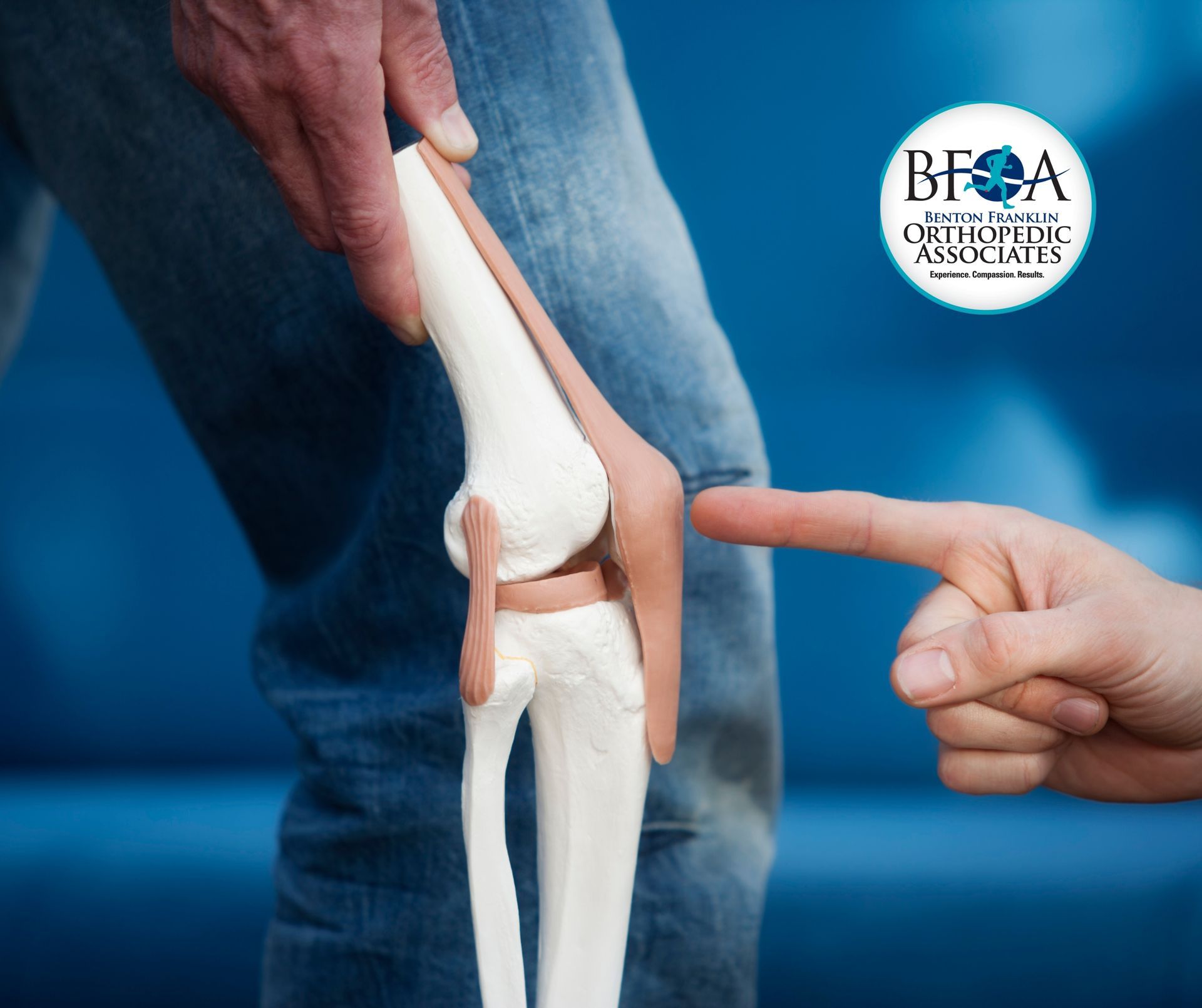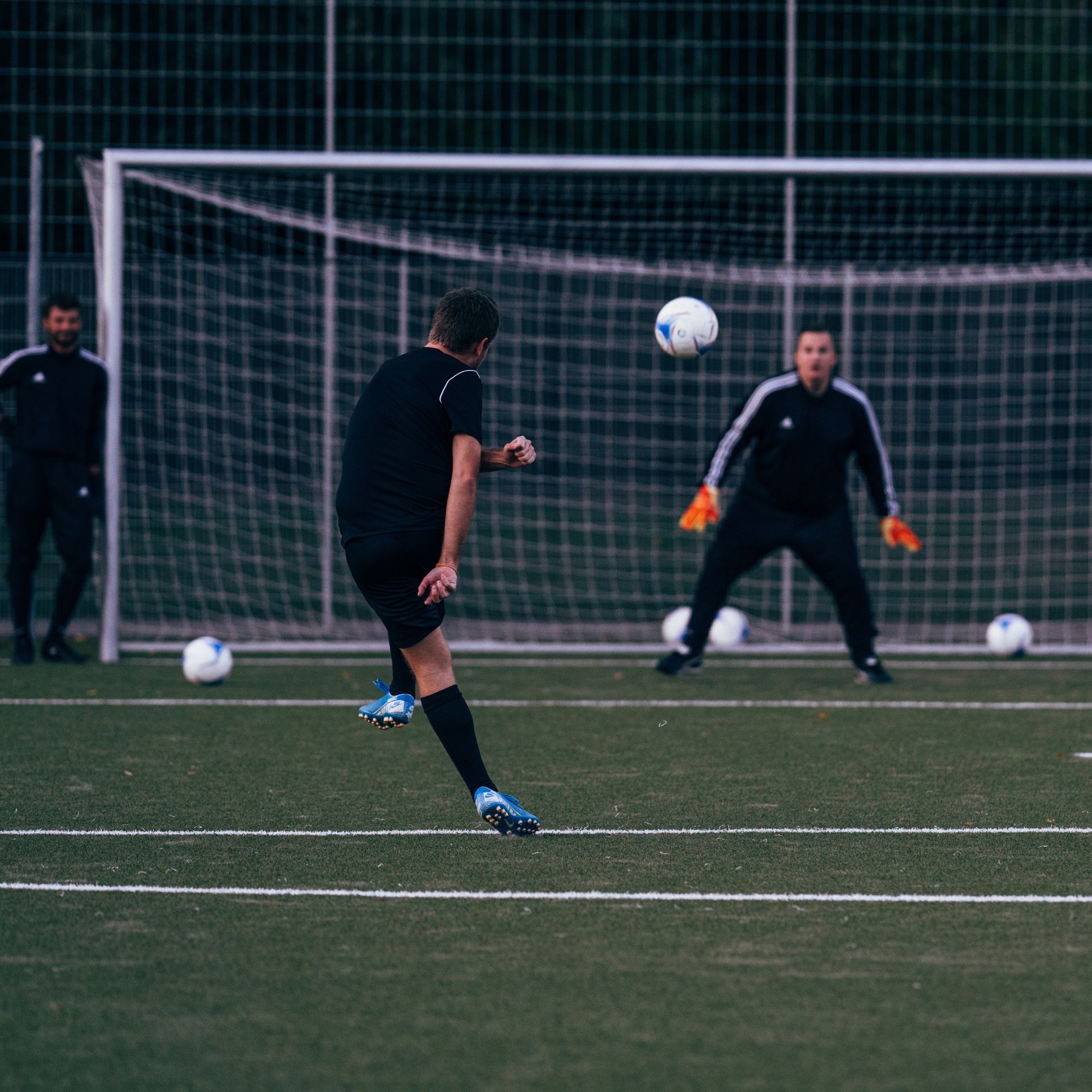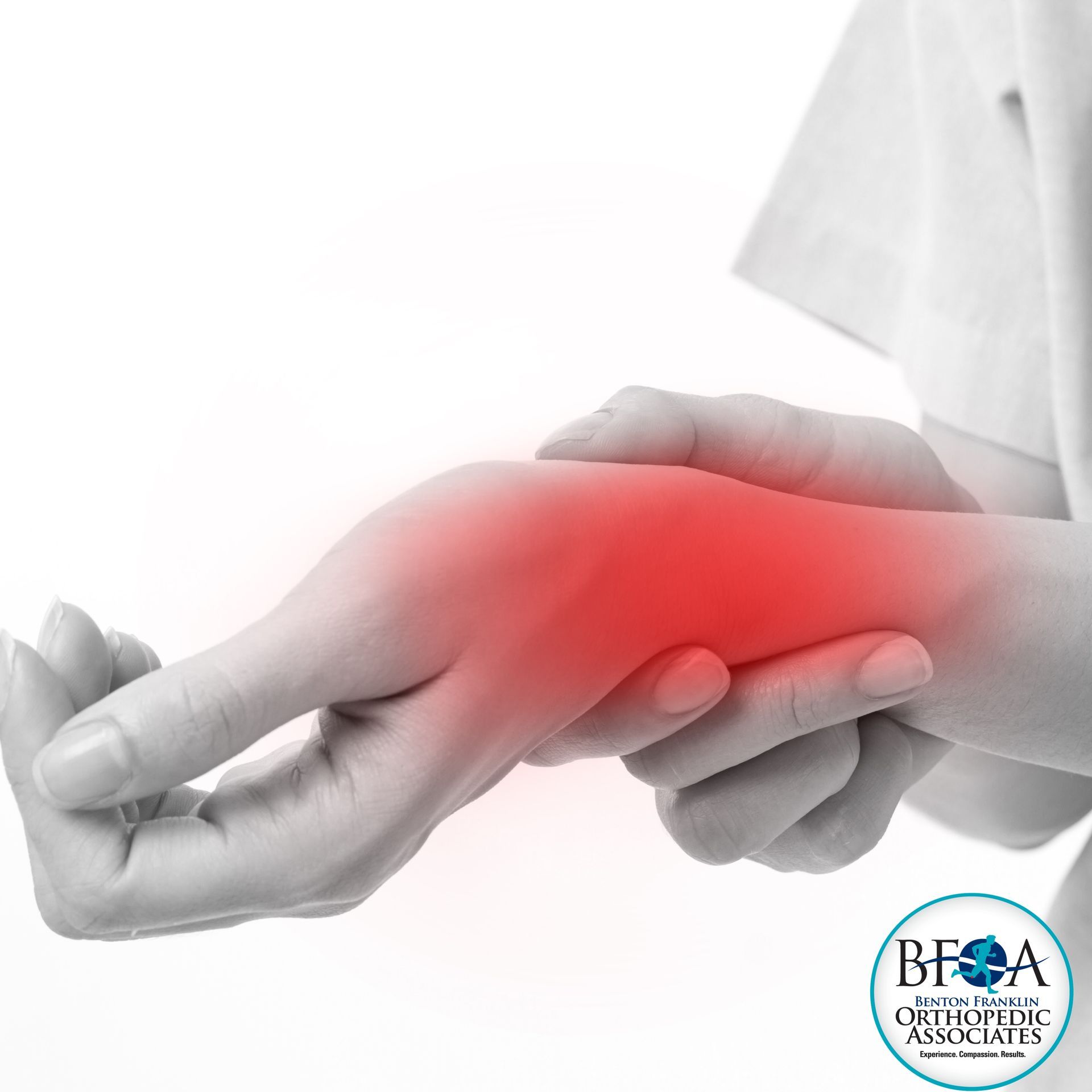Meniscus Tear in Kennewick, WA
Understanding Meniscus Tears: Causes, Symptoms, and Comprehensive Care at BFOA

At Benton Franklin Orthopedic Associates (BFOA), we understand how crucial knee health is to your mobility and quality of life—especially for athletes and active individuals. One of the most common knee injuries we treat is a meniscus tear, a condition that can affect anyone from weekend warriors to professional athletes.
What Is a Meniscus Tear?
The meniscus is a C-shaped piece of cartilage in your knee that acts as a cushion between your thighbone and shinbone. Each knee has two menisci—medial and lateral. A tear can occur due to sudden twisting or turning, often during sports that involve pivoting, such as basketball, soccer, or skiing. This tear is one of the most frequent occurring cartilage injuries of the knee due to the fact that cartilage is the connective tissue that protects your joints and bones. You don't have to be an athlete to tear your meniscus.
Meniscus tears can result from a variety of activities and conditions, including:
- Sudden twisting or pivoting motions, especially during sports.
- Direct impact or trauma to the knee.
- Deep squatting or heavy lifting.
- Rapid changes in direction while running.
- Aging and cartilage degeneration.
- Osteoarthritis, which weakens the meniscus over time.
- Repetitive stress from certain occupations or activities.
- Improper footwear or poor biomechanics.
- Previous knee injuries, which increase susceptibility.
A meniscus tear may not always be immediately obvious.
Symptoms can develop over time and may include:
- A popping sensation at the time of injury.
- Pain along the joint line of the knee.
- Swelling or stiffness, often worsening over 2–3 days.
- Catching or locking of the knee joint.
- Difficulty fully straightening or bending the knee.
- Instability or the feeling that the knee might give out.
- Tenderness when pressing on the knee.
- Reduced range of motion.
- Clicking or grinding sensations during movement.

At BFOA, our sports medicine specialists use a combination items to diagnose a possible tear:
- Detailed Medical History: We begin by discussing your symptoms, how the injury occurred, and any previous knee issues.
- Physical examination: Our provider will perform a physical exam to determine tenderness along the joint line, swelling or fluid buildup, range of motion limitations or and instability or weakness.
- The physical examination could include something called a "McMurray test" used to detect pain, a possible clicking sound, or instability.
- Imaging tests such as MRI or X-rays to confirm the diagnosis and rule out other injuries.

At Benton Franklin Orthopedic Associates, we prioritize “Conservative care first. Surgery only when necessary.” Many meniscus tears—especially those that are small, stable, or located in the outer edge of the cartilage—can heal without surgery.
Our non-surgical treatment options could include one or more of the following below:
1. RICE Protocol (Rest, Ice, Compression, Elevation):
- Rest: Avoid activities that aggravate the knee, especially twisting or pivoting motions.
- Ice: Apply ice packs for 15–20 minutes every few hours to reduce swelling and pain.
- Compression: Use an elastic bandage or knee brace to minimize swelling and support the joint.
- Elevation: Keep the knee elevated above heart level to help reduce inflammation.
2. Medications:
- NSAIDs (Nonsteroidal Anti-Inflammatory Drugs) such as ibuprofen or naproxen can help relieve pain and reduce swelling.
- In some cases, topical anti-inflammatory creams may also be recommended.
3. In-House Physical Therapy:
- Our licensed physical therapists work closely with our orthopedic team to design a customized rehabilitation plan. Therapy focuses on:
- Strengthening the muscles around the knee to improve joint stability.
- Improving flexibility and range of motion.
- Correcting movement patterns to prevent future injuries.
- Gradual return-to-activity programs for athletes and active individuals.
4. Activity Modification:
- We may recommend temporarily avoiding high-impact activities such as running, jumping, or squatting. Low-impact exercises like swimming or cycling may be introduced as healing progresses.
5. Knee Bracing or Support:
- A supportive knee brace may be used to stabilize the joint during recovery, especially if the tear causes instability or locking.
6. Injections (Emerging Options):
- While not standard for all cases, some patients may benefit from:
- Corticosteroid injections to reduce inflammation and pain.
- Platelet-Rich Plasma (PRP) or other biologic injections, which are being studied for their potential to promote healing in certain types of meniscus injuries.

If the tear is severe, complex, or doesn’t respond to conservative treatment, surgery may be necessary to restore knee function and relieve pain.
Our board-certified orthopedic surgeons specialize in minimally invasive procedures that promote faster recovery and better outcomes.
Surgery is typically recommended when:
- The tear causes the knee to lock, catch, or give way.
- Pain and swelling persist despite rest and therapy.
- The tear is located in a region with poor blood supply, making natural healing unlikely.
- The patient is young or active and wishes to return to sports or high-impact activities.
Our surgical expertise includes:
1. Arthroscopic Meniscus Repair:
This is a minimally invasive procedure where the surgeon uses a small camera (arthroscope) and specialized instruments inserted through tiny incisions around the knee. The torn edges of the meniscus are sutured (stitched) together to allow natural healing.
- Best suited for younger patients or tears in the outer third of the meniscus, which has a good blood supply.
- Also suited in older patients who have good blood supply and who remain active.
- Preserves the meniscus, which is important for long-term joint health.
- Recovery may take longer than removal but offers better protection against arthritis in the future.
2. Partial Meniscectomy
In this procedure, the surgeon removes the damaged portion of the meniscus while preserving as much healthy tissue as possible.
- Often used when the tear is in the inner two-thirds of the meniscus, where healing is unlikely.
- Provides faster recovery than repair, with many patients returning to normal activities within weeks
3. Meniscus Transplant (in select cases)
For patients with a previous total meniscectomy and ongoing pain, a meniscus transplant may be considered. This involves replacing the damaged meniscus with donor tissue. While not common, it can be an option for younger, active individuals with persistent symptoms.

Take the First Step Toward Healing
At Benton Franklin Orthopedic Associates, we’re committed to helping you move better, feel stronger, and live pain-free. Whether you're an athlete sidelined by a meniscus tear or someone dealing with chronic knee discomfort, our team is here to guide you every step of the way—from diagnosis to recovery.
With expert orthopedic care, in-house physical therapy, and a philosophy of “Conservative care first. Surgery only when necessary,” you can trust that your treatment plan will be tailored to your needs and goals.
🦵 Don’t let knee pain hold you back.
📅 Schedule your consultation today and take the first step toward getting back to the activities you love.
📞 Call us at (509) 586-2828
📍 Visit us at 8200 W Gage Blvd, Kennewick, WA 99336
🌐 Book online at www.bfoaonline.com












